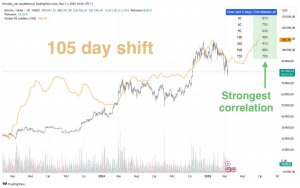The Historical Role of Marketing in Political Campaigns

Marketing has always played an important role in political campaigns and the outcome of elections in the United States. From the first presidential election in 1800 between John Adams and Thomas Jefferson through to the current cycle, marketing has been central to campaigns and has even been the determining factor in some (American Experience, n.d.). Over the course of the years, advances in technology have shifted the role that marketing plays.
In the early days of the union, political pamphlets were the most effective mode of spreading the word, whether positive self-promotion or negative opposition. This was followed by newspapers in the 19th century, then radio and television in the 20th century. In the 21st century, novel technologies of the Internet, social media, and big data analytics have taken hold of American marketing and marketing research, and, as a result, have changed the rules of political campaigning completely.
There are three major ways in which the new technology is shifting how campaigns are run: broader reach, personalized content, and data feedback loop (Joy, n.d.). One of the distinctive aspects of the Internet and social media is the fact that users can access information (including media and news) anywhere they go. Instead of relying entirely on physical media like newspapers or billboards, candidates can blast information to anyone who will listen no matter where they are.
About 80% of Americans have a social media account (Statista, 2020). An email campaign or website costs a fraction of what it costs to print flyers or walk precincts (Sinha, 2016). As a result, candidates can spread their message to a wider audience and at a less expensive rate than with previous methods. This can be seen in the success of the Trump 2016 campaign, which was more tactical in its Internet marketing than the Clinton campaign, and cost about half as much (Pramuk, 2016).
A second way new marketing is affecting elections is by means of personalized content. The fact that the Internet and social media are accessed on a very individualistic basis means that the audience limits their exposure to that which they seek out much more than with previous channels. Coupled with the ability to identify users’ demographic information and track usage, this gives Internet marketers the ability to be very specific in their content (Agrawal, 2019).
If a user is from Texas and has shown interest in border security, a campaign can send that person specific information relevant to him. Likewise, the flexibility of the medium allows for greater variability in content, and thus offers opportunity for testing and learning on the fly (CallHub, n.d.).
A third way that new marketing is shifting the outcome of elections is via a big data feedback loop. Since every online interaction is trackable, marketers can analyze and react with greater speed than ever before (Nickerson & Rogers, 2013). This helps campaigns identify their target market better, but, in a few notable instances, this has led campaigns to focus on certain portions of the populace to the neglect of others, and ultimately dismiss voters who do not fit in their target market (Illing, 2017). Not only does this reduce the effort campaigns devote to persuasion, it also means they are liable to confirmation bias and ultimately a false sense of confidence based on misleading poll data (Nickerson, 2016).
References
Agrawal, A.J. (2019). How digital marketing changed the 2016 presidential race and will change 2020’s. Retrieved from https://www.entrepreneur.com/article/336682
American Experience (n.d.). Running for president. Retrieved from https://www.pbs.org/wgbh/americanexperience/features/presidents/
CallHub (n.d.). 10 ways the Internet changed political campaigning. Retrieved from https://callhub.io/10-ways-internet-changed-political-campaigning/
Clement, J. (2020). Share of U.S. population who use social media 2008-2019. Retrieved from https://www.statista.com/statistics/273476/percentage-of-us-population-with-a-social-network-profile/
Illing, S. (2017). https://www.vox.com/conversations/2017/3/16/14935336/big-data-politics-donald-trump-2016-elections-polarization
Nickerson, R. (2016). Confirmation bias helps explain why pundits got the U.S. election wrong. Retrieved from https://phys.org/news/2016-11-bias-pundits-election-wrong.html
Nickerson, D., Rogers, T. (2013). Political campaigns and big data. Harvard Kennedy School. Retrieved from https://scholar.harvard.edu/files/todd_rogers/files/political_campaigns_and_big_data_0.pdf
Pramuk, J. (2016). Trump spent about half of what Clinton did on his way to presidency. Retrieved from https://www.cnbc.com/2016/11/09/trump-spent-about-half-of-what-clinton-did-on-his-way-to-the-presidency.html
Sinha, M. (2017). Online marketing vs. print advertising: which is best media to achieve max. ROI? Retrieved from https://www.linkedin.com/pulse/online-marketing-vs-print-advertising-which-best-max-mridu-sinha-







